Samsung Galaxy S5 specs review

With a 5.1" 1080p screen, 16 MP camera and 2 GB of RAM, the Galaxy S5 might not be the ultimate Android specs monster, yet it comes with plenty of new features, both in comparison with its predecessor, the S4, and when measured up to the other flagships. The heartbeat sensor and the Finger Scanner in that implementation, for instance, are unique for the Galaxy S5.
Furthermore, the addition of a fast Snapdragon 801 chipset brings on LTE-A download speeds, and 4K video recording, to an already superb handset. Let's dive deeper into the specs list of Samsung's Galaxy S5.
Design
Samsung still used plastic for the chassis, but with a new perforated pattern for the back cover, that differs from the faux leather looks of its latest devices.Besides the typical Charcoal Black and Shimmery White, the Galaxy S5 now comes with two extra colors at launch - Electric Blue, and funky Copper Gold.
At 142.0 x 72.5 x 8.1mm, the Galaxy S5 sports a taller, wider body than the S4, with its 136.6 x 69.8 x 7.9 mm. The Finger Scanner might be the reason, requiring a thicker bottom bezel. At 145 grams, the S5 is also heavier than the Galaxy S4. Check out this size comparison below - it's almost as big as the Z2.
Just like the Galaxy S4 Active, the phone, however, carries IP67 rating, which might have warranted the larger chassis. This means that it is completely sealed from dust, and will remain functional even after you dunk it in up to three feet (1m) of water, for as long as half an hour.
Heart rate sensor and Finger Scanner
Besides the usual pedometer, diet and exercise recordings, that come with its S Health app, Samsung has now paired it with something really interesting - a built-in heart rate monitor, located next to the LED flash. Thos sensor probably works on the same principle that the optical one on the Gear 2 smartwatch does, and you can further customize the experience with an abundance of third party apps, that take advantage of the combined health and fitness trackers on the phone.
The above mentioned swipe Finger Scanner is embedded in the home key, providing biometric authentication for unlocking the phone, or for secure mobile payments transactions.

Display
The S5 uses a 5.1" Super AMOLED display with 1080x1920 pixels of resolution, raking in a tad lower pixel density than its S4 predecessor, but still more than enough for each purpose you might throw at it. Those rumors for a Quad HD display didn't pan out, unless Samsung has other aces up its sleeve this year, between the S5 and the Note 4 announcements. The screen is capable of 500 nits of peak brightness, which is pretty extraordinary for an AMOLED display, and 2 nits of minimal brightness, which should come handy for the overall contrast, and for night usage.
Processor and memory
A quad-core Snapdragon 801 (Qualcomm's MSM8974-AC chipset), clocked at 2.5 GHz, is what's powering the Galaxy S5. That's the fastest Snapdragon you can currently get on a phone; it is clocked a bit higher than the 2.3 GHz MSM8974-AB processor in the Xperia Z2, which is also labeled Snapdragon 801.
This processor is just a step below Qualcomm's fastest Snapdragon 805, which, however, won't be in devices before the summer, so the S5 won't feel underpowered for the foreseeable future. The GPU is clocked from 450 MHz to 578 MHz in 8974AC, which boosts the graphics prowess quite a bit. In comparison with Snapdragon 800, the new 801 comes with 14% faster Krait 400 processor cores, 28% faster Adreno 330 graphics, and the whole reason for the 801 being - a 45% improvement in camera sensor processing speed.
Just like last year's edition, the S5 is graced with 2 GB of RAM, unlike Sony's new flagship, for example, that comes with 3 GB. Samsung is shipping the S5 with 16 GB or 32 GB of internal memory, depending on the version, plus a microSD card slot for storage expansion up to 64 GB more.
Connectivity
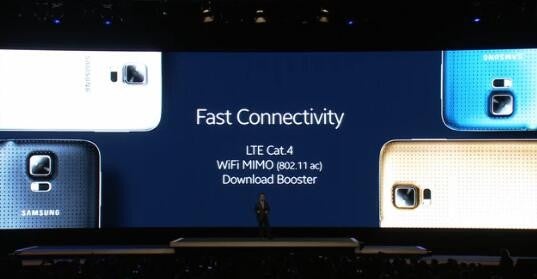
First phone with Wi-Fi 2x2 MIMO
Of separate note is the Wi-Fi 2x2 Multiple Input Multiple Output (MIMO) setup, likely provided by Broadcom's new BCM4354 5G System-on-a-Chip (SoC). It's an alternative to the 1x1 MIMO chips used in smartphones, bringing the same multiple antenna capabilities found in tablets and home wireless networking devices, finally in phones.
Camera
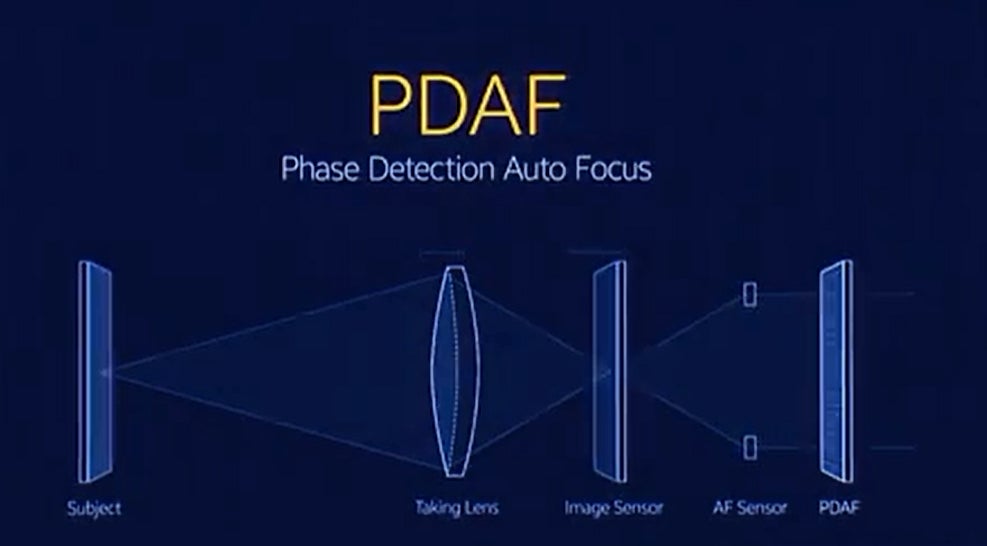
Besides 4K video recording at 30fps, the processor also allows for a few extra camera tricks, too. Selective Focus allows users to tap on objects they want to look sharp, and the rest of the background gets blurred, achieving a shallow depth of field (DOF) effect without special lenses. Sony bragged with the same thing for the Z2, so we'd imagine that the new image processing capabilities in Snapdragon 801 are what makes 4K video recording and Selective Focus possible, rather than some homebrew ISPs from Samsung or Sony.
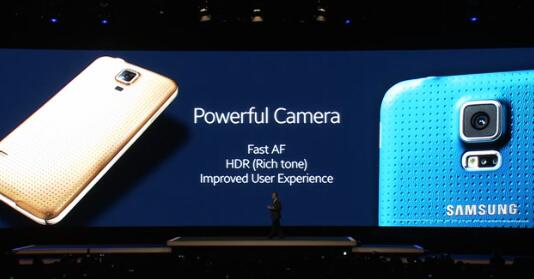
Battery
The 2800 mAh battery unit in the Galaxy S5 can thankfully be swapped out, in the best of Samsung's design traditions. It is rated for the respectable 21 hours of talk time on a charge, and 16 days of standby. Samsung bragged that the Galaxy S5 can endure up to 10 hours of web browsing, and up to 12 hours of HD video playback, which are impressive numbers indeed. There is a new Ultra Power Saving Mode, too, that makes the display show images in black and white, shutting down all processes and connections it deems unneccessary, which should make the phone last quite a long time more, in case you are running out of juice.

With the Finger Scanner biometry, and the heart rate sensor, Samsung arguably differentiated the Galaxy S5 better for the average user, than if it just slid in a gig of RAM more, or placed an even higher resolution camera sensor for the geeky crowd. Rather, there are subtle enhancement that matter, like the boosted peak brightness of the display, and the 4K video recording. There are notable specs omissions, though, like the lack of optical image stabilization for the camera, which the competition has. Do you think that those will affect the Galaxy S5 expected millions of sales volume, or has Samsung focused where it matters for the mass market?
Follow us on Google News


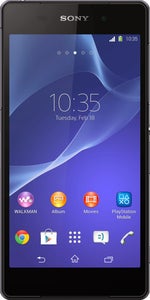
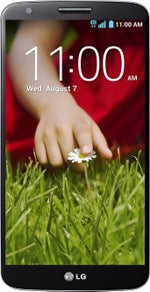
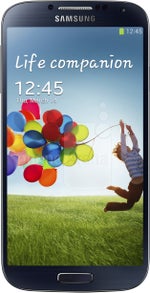





![Some T-Mobile users might be paying more starting in March [UPDATED]](https://m-cdn.phonearena.com/images/article/176781-wide-two_350/Some-T-Mobile-users-might-be-paying-more-starting-in-March-UPDATED.webp)











Things that are NOT allowed:
To help keep our community safe and free from spam, we apply temporary limits to newly created accounts: